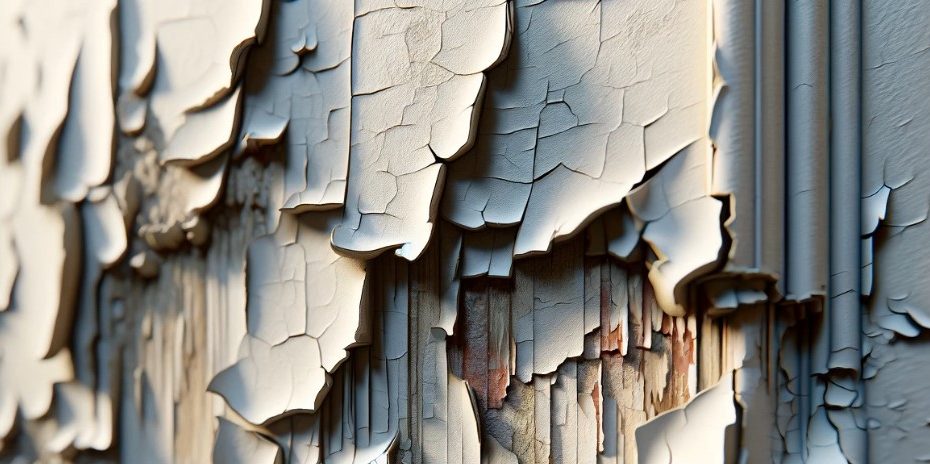Interior paints are designed for use inside the home, where conditions are relatively stable and controlled. They are formulated to be scrubbable, stain resistant, and low odor. Exterior paints, on the other hand, are designed to withstand outdoor elements like sunlight, rain, snow, temperature swings, and moisture. So how long will interior paint last if you use it outdoors instead of exterior paint?
Unfortunately, interior paint will start deteriorating in a matter of weeks or months when exposed to outdoor conditions. The binders and pigments in interior paints are not durable enough to withstand the damaging effects of sunlight, moisture, and temperature fluctuations outdoors.
How Soon Does Interior Paint Fail Outdoors?
| Climate and Exposure | Expected Lifespan |
|---|---|
| Hot and humid, full sun | Less than 1 month |
| Temperate, partial shade | 1-3 months |
| Cool and dry, no direct sun | 3-6 months |
Key Takeaways
- Colder climates extend lifespan slightly
- Any direct sunlight decreases the lifespan
- Primer and additives only extend a few months
Sunlight and UV Rays Cause Fading and Breakdown
Direct sunlight and UV rays will quickly start breaking down the organic pigments used in interior paint. This causes the paint to fade and take on a chalky, powdery appearance over time. The binders that hold the pigment together also become brittle, leading to cracking and peeling. Darker colors tend to fade faster than lighter tones when interior paint is used outside.
Temperature Changes Lead to Expansion and Contraction
With exterior temperatures varying so much between night and day, hot and cold seasons, interior paint does not have the flexibility to expand and contract without failing. The constant expansion and contraction will cause the paint to crack or peel off the surface. Using interior paint on surfaces that get direct sun exposure means even bigger temperature swings.
Interior Paint May Last Weeks to Months Outside
How soon interior paint starts failing depends partially on climate and exposure. In hot, humid climates with regular rainfall, deterioration will begin in a few short weeks in many cases. In cooler, drier climates, the paint may last for a few months before fading, cracking, peeling, and generally looking unsightly. Areas with direct sun exposure will also fail faster than shaded regions. But across all types of weather and locations, interior paint reaches the end of its lifespan outdoors relatively quickly.
Additives Can Help But Have Limits
There are some additives like primers, sealers, and clear topcoats that can be used to extend the life of interior paint when used outside. Priming provides extra adhesion, sealers protect against moisture damage, and clear coats add an extra weather-resistant barrier against the elements. However, these additives only go so far before the interior paint underneath starts deteriorating anyway. They may buy an extra few weeks or months but cannot prevent eventual failure.
Moisture Exposure
Interior paint is vulnerable to damage when exposed to moisture, especially high humidity environments. Here are the key points:
- High humidity provides favorable conditions for mold, mildew, and fungus to grow on painted surfaces. This leads to dark spots, blotches, and other unsightly growth.
- Moisture getting trapped underneath interior paint causes blistering as it fails to adhere properly to the wet surface.
- Without proper ventilation, moisture buildup inside a home can lead to paint cracking, flaking, chipping, or peeling away from the wall.
- Using high gloss paint finishes provides more protection in naturally high-humidity rooms like bathrooms and kitchens.
- Primers like Zinsser Bulls Eye 1-2-3 can prepare surfaces in humidity-prone areas before painting.
- Zinsser Perma-White Interior Paint is formulated to better withstand high condensation environments to prevent fungal degradation.
Moisture Causes Mold, Mildew, and Blistering
Interior paints do not have the mold and mildew inhibitors that exterior paints contain. When interior paint gets wet from rain, snow, or humidity, it allows mold and mildew growth. This appears as dark spots that continue spreading across the painted surface. Additionally, when moisture seeps underneath interior paint, it can cause blisters as the paint fails to adhere properly to the wet surface.
In conclusion, it is not recommended to use interior paint outdoors. While it may last for a short period, exposure to sun, moisture, and temperature fluctuations will cause interior paint to start fading, blistering, cracking, and peeling in relatively short order. Using exterior paint specifically designed for outdoor use is the best practice for any surface that will be exposed to the elements. This ensures long-lasting, durable, and consistent performance for years.
